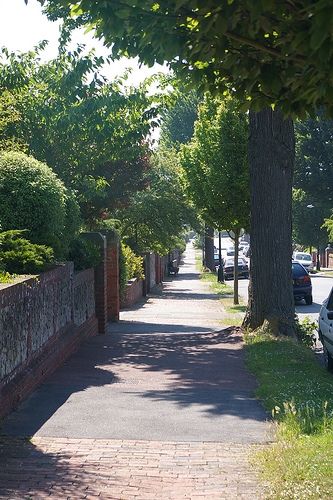
Last month the City of San Francisco released its final draft of its Better Streets Plan, a design guideline to make the city safer, healthier, prettier, and easier to use. The Better Streets Plan was developed over a number of years after a Better Streets Policy was implemented by the Board of Supervisors and Mayor Gavin Newsom in February 2006.
It aims high. As stated in the Plan’s Executive Summary:
If fully realized, the Better Streets Plan will bring a number of benefits to San Francisco. It will help retain families in San Francisco, support Muni and a transit first city, help promote public safety, help to minimize sewer/stormwater overflows into the Bay, decrease the likelihood of pedestrian injuries and fatalities, increase accessibility for all street users, and enhance the everyday quality of life for San Francisco’s residents.
The plan has 10 major themes:
- Distinctive, unified streetscape design
- Space for public life
- Enhanced pedestrian safety
- Improved street ecology
- Universal design and accessibility
- Integrating pedestrians with transit
- Creative use of parking lanes
- Traffic calming
- Pedestrian-priority designs
- Extensive greening
These are all fantastic goals, and it’s exciting to imagine the changes they will bring to this city. Nonetheless, the Urban Forest section of the plan itself (6.1, if you want to read the whole thing) is missing one huge piece of the “greening” equation — soil.
The plan covers literally almost everything else — placement, species selection, stormwater, size, location & spacing, and size of tree basins — but it gives only the most cursory attention to the growing medium responsible for bringing the tree to maturity. The only real mention of it, in the Size of Tree Basins section, is: “Trees need adequate surface area for root growth” and “Continuous trenching between tree basins (which can be covered by paving) should be used wherever possible to maintain the capacity of oxygen and water to enter the soil in a tree basin.”
Well, yes. Certainly.
The plan outlines minimum tree basin sizes, but they are based relative to sidewalk dimensions only without any mention of the species they are designed to house. (The tree basin sizes range from 2′ x 4′ at the smallest to 5′ x 5′ at the largest.) While larger tree basins are always great (and the cheapest soil you can “buy”), they are not enough. Even the largest 5′ x 5′ basin would only provide around 75 cubic feet of soil to a tree if there were no additional soil accessible elsewhere.
More than surface area for root growth, trees need access to adequate amounts of high-quality, lightly compacted soil suitable to their species and climactic conditions. It takes way, way more soil than the Public Utility Commission, developers, and so forth realize to grow a sizable tree that will survive to maturity — in some cases five, six, seven, even ten or more times as much soil as they are allotted. A tree that has adequate amounts of soil is the one that will actually net the city money on their investment in terms of stormwater intercepted and/or harvested on-site, cleaner air and water, safer and more beautiful streets, and increased home and business values.
Soil volumes are one of the most critical tools in our quest to grow forest-quality trees in the built environment. Mandatory soil volumes for street trees are being implemented in other cities in North America (Emeryville — just across the Bay!, Charlotte, Toronto and Winnipeg, to name a few) that are serious about nurturing their urban canopies and using green utilities to improve their cities. That guideline is nowhere to be found in the SF Better Streets Plan document.
Without clear and accurate guidelines about appropriate soil volumes for tree sizes at maturity, we cannot realistically expect that trees planted under the aegis of San Francisco’s Better Streets Plan will contribute to the “extensive greening” promised in the Plan’s Executive Summary. “Extensive greening” is not the only goal out of their ten states themes that will suffer as a result of this omission. Trees and other green things are not isolated improvements — they also impact pedestrian safety, street ecology, and traffic calming. It is a tremendous oversight.
(Image: elms from the 1930s in Eastbourne, UK by debs-eyes)






Since the City of Emeryville is mentioned in this story, I wanted to clarify what our requirement is for new development projects: We require minimum rootable soil volumes for new trees planted in the public right of way by private developers. The minimum is based on the size of the tree at maturity: 600 cubic feet for a small tree, 900 for a medium tree and 1200 for a large tree.